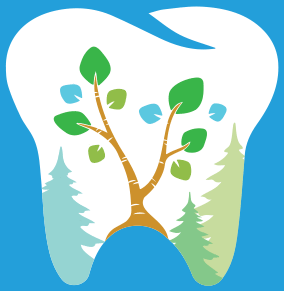
Every parent knows that the sheer joy of celebrating your child’s first tooth is amazing! Those little pearly white teeth bring nothing short of delight in your daily lives and countless photo opportunities. But what happens when that smile turns into an unexpected sight like bleeding teeth gums?
Did you know that over 40% of toddlers experience bleeding gums? It’s definitely a scenario no adult, let alone little toddlers want to face! So what happens when your little one is crying their eyes out, frustrated with injured gums? You seek help from an experienced pediatric dentist who is patient and can treat your child with kindness.
So continue reading if you’re searching for the best pediatric dentists in Hansville and nearby areas to help with your child’s bleeding gums.
Recognizing the Signs of Bleeding Gums
Parents and caregivers should recognize the early signs of bleeding gums in infants and children to take prompt action and seek appropriate dental care. Some of these are:
- Blood on toothbrush or Dental Floss: One of the most obvious signs of bleeding gums is blood on a child’s toothbrush, dental floss, or in the sink after brushing and flossing. If your child’s teeth gums bleed regularly during oral care routine, then it’s best to consult a pediatric dentist near you, instead of trying home remedies or taking it lightly.
- Chronic Halitosis: Halitosis is the medical term for bad breath. It’s pretty normal to get bad breath after eating strong food items like onion and garlic. But it’s a problem if it persists and refuses to go away. Pediatric dentists in Bremerton suggest that persistent bad mouth odor is another warning sign of bleeding teeth gums and must not be overlooked.
- Dental Sensitivity and Pain: When kids experience dental aches and sensitivity, they may avoid basic dental care like brushing and flossing due to discomfort. Additionally, sensitivity caused by cavities or tooth decay can sometimes result in kids chewing only from one side of their mouth, leading to uneven pressure on their gums. Such factors contribute to poor oral health and bleeding gums.
- Gingival Ulceration: The term Gingival Ulceration refers to the development of painful sores and ulcers on teeth gums. Pediatric dentists in Port Hadlock can guide you on multiple grounds of such infections, like accidental biting by toddlers, allergies, and vitamin deficiencies. These ulcers cause gums to be more prone to bleeding and swelling.
- Persistent swelling: If your kid has persistent swelling in gums that doesn’t get better or worsens over time and causes bleeding occasionally, you should get it evaluated by an experienced pediatric dentist in Kingston.
It’s best to visit a pediatric dentist near you to get to the root cause of the problem sooner rather than later.
The Role of Proper Nutrition
Ascorbic acid, more popularly known as Vitamin C, plays an important role in collagen production, which is important for healthy teeth and gums. Even the experts agree. For instance, a study by the National Institute of Health claims that severe vitamin C deficiency can lead to a dental condition known as scurvy. This oral disease is characterized by bleeding gums, gum inflammation (Gingivitis), and loose teeth.
Also, a lack of other nutrients like Vitamin K and D, iron deficiency, and low levels of Omega-3 Fatty acids and antioxidants all contribute to poor dental health and bleeding teeth gums. The top pediatric dentists in Gig Harbor suggest that parents must feed their children three balanced meals in a day, that is rich in fruits, green leafy vegetables, whole grains, and dairy products.
Causes of Bleeding Gums
There are several reasons why a kid may have bleeding gums. Let’s explore some of them.
- Poor Oral Health: This may be the most obvious point, but avoiding daily dental care, like brushing and flossing your teeth, can lead to the accumulation of bacteria and plaque on teeth and gums, ultimately leading to irritation and bleeding. Maintain a strict two time brushing teeth policy to practice good oral hygiene.
- Brushing too hard: Most toddlers apply too much pressure on the toothbrush and brush rather aggressively in hopes of cleaner teeth. If done repeatedly over a long period of time, it can lead to gum swelling and bleeding.
- Gingivitis: Gingivitis is a painful inflammation of the gums caused by poor oral hygiene in kids. The easiest way to check if a toddler is suffering from Gingivitis is to notice if their gums are:
- Swollen and puffy
- Dusky or dark red, mostly bleeding while brushing and flossing.
- Receding and tender
- Periodontitis: If left untreated, Gingivitis can progress to a more severe gum disease, leading to gum tissue and eventual bone loss, also known as Periodontitis.
- Trench Mouth: ANUG (Acute Necrotizing Ulcerative Gingivitis), or Trench Mouth, is a bacterial infection that causes painful ulcers and bleeding within the gums.
- Poor Diet or Vitamin Deficiency: A lack of essential vitamins and minerals, like Vitamin C, or inadequate nutrition in a child’s body can potentially weaken gum tissues and lead to bleeding gums.
- Thrombocytopenia: This medical condition is marked by a low platelet count in blood levels. These platelets are important for blood clotting, so a deficiency can lead to easy bruising and bleeding.
Choosing the Right Toothbrush and Toothpaste
To both avoid and manage this frustrating oral health issue, parents and caretakers should stick to providing and using toothbrushes and tubes of toothpaste that have received the ADA (American Dental Association) seal of acceptance.
According to the CDA, toddlers under three years of age should have their teeth brushed by an adult using a manual toothbrush with soft bristles. Similarly, all kids under six need to brush their teeth under the guidance of a guardian.
If you’re confused about which brush to go for, remember that Dentistry for Children always gives a new high-quality toothbrush at each checkup visit.
When it comes to toothpaste, it’s important to consider the child’s age. If your kid is under two years old, it’s best only to use water or toothpaste that doesn’t contain fluoride. You can also use a tiny amount of fluoride toothpaste for your kids if no water fluoridation or fluoride supplements are used.
Regular Dental Checkups
Regular pediatric dental care and checkups are necessary for managing and treating bleeding gums. Pediatric dentists in Port Ludlow can help identify underlying causes such as vitamin deficiencies or gum disease. They offer guidance on correct oral hygiene practices and recommend specialized treatments if necessary. Early detection prevents the condition from worsening, allowing your little one to remain carefree.
In contrast, neglecting dental visits can result in increased discomfort and prolonged gum issues.
Pediatric Dentist near your area
Our qualified and caring team at Dentistry for Children offers state-of-the-art technology, a warm and friendly environment, and advanced care for all our young patients. Conveniently serving families in Seabeck, Bainbridge Island, Belfair, Port Townsend, Poulsbo, Silverdale, Hansville, and nearby locations, our pediatric dentistry is unrivaled!
As a parent, your child’s dental health lies in your hands. Choose us. Choose the best!
To schedule a call with one of our expert professionals, feel free to contact us.

